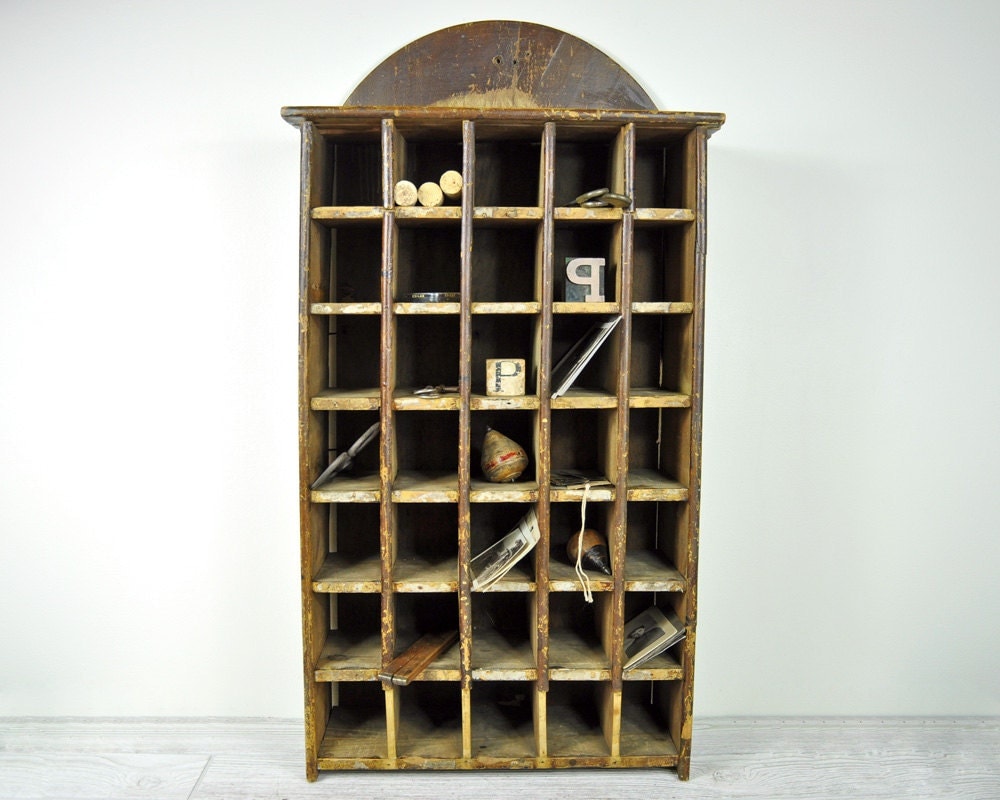History and Evolution of Mail Sorting Cabinets: Vintage Mail Sorting Cabinet

The humble mail sorting cabinet, a fixture in offices and homes for centuries, has witnessed the evolution of communication and postal systems. From rudimentary wooden structures to sophisticated modern designs, these cabinets have played a crucial role in organizing and managing mail, reflecting the changing needs of society.
Origins and Early Development
The origins of mail sorting cabinets can be traced back to the early days of postal services, when mail was primarily delivered by foot or horseback. These early cabinets were simple, often consisting of wooden boxes or drawers, designed to hold and organize letters and packages. As postal systems expanded and the volume of mail increased, the need for more efficient sorting methods emerged.
The Rise of Vintage Mail Sorting Cabinets
The late 19th and early 20th centuries saw a surge in the development of more sophisticated mail sorting cabinets. These vintage cabinets were characterized by their sturdy construction, often crafted from durable materials like oak or mahogany. They featured multiple compartments and drawers, designed to accommodate different sizes and types of mail. Key design features included:
- Compartments for Sorting: Vintage cabinets often had numerous compartments, each labeled for different destinations or types of mail, facilitating efficient sorting.
- Drawers for Storage: Drawers provided secure storage for outgoing mail, stamps, stationery, and other postal supplies.
- Locking Mechanisms: Locks ensured the security of valuable mail and sensitive documents.
- Durable Construction: Vintage cabinets were built to last, using solid wood and robust hardware, ensuring longevity and resistance to wear and tear.
Materials and Craftsmanship
Vintage mail sorting cabinets were a testament to the craftsmanship of the era. Skilled artisans used traditional woodworking techniques, paying meticulous attention to detail and quality. Common materials included:
- Oak: A durable and aesthetically pleasing hardwood, often used for the cabinet’s frame and drawers.
- Mahogany: A rich, reddish-brown hardwood, prized for its beauty and strength, often used for cabinet doors and decorative elements.
- Brass: Used for hinges, handles, and other hardware, adding a touch of elegance and durability.
- Leather: Sometimes used for drawer linings or decorative accents, adding a touch of luxury and sophistication.
Evolution of Mail Sorting Systems
The development of mail sorting systems has been a continuous process, driven by technological advancements and changing needs. Significant milestones include:
- Early Post Offices: In the 18th and 19th centuries, post offices relied on manual sorting methods, using simple cabinets and pigeonholes.
- Mechanization: The late 19th century saw the introduction of mechanical sorting machines, automating the process and increasing efficiency.
- Automation and Digitization: In the 20th century, the use of automated sorting machines and barcode technology revolutionized mail handling.
- Modern Mail Sorting Systems: Today, mail sorting systems are highly automated, utilizing sophisticated software and robotics to process large volumes of mail quickly and efficiently.
Design and Functionality of Vintage Mail Sorting Cabinets

Vintage mail sorting cabinets, often found in post offices and businesses, were designed to streamline mail processing and delivery. Their intricate design and functionality reflect the evolving needs of communication and logistics in the 20th century.
Layout and Organization of Compartments, Vintage mail sorting cabinet
The typical layout of a vintage mail sorting cabinet involved a series of compartments or drawers, each designated for a specific purpose or destination. The compartments were often arranged in a hierarchical manner, with larger compartments for general sorting and smaller compartments for specific addresses or routes. This organization facilitated efficient sorting and retrieval of mail.
Unique Design Features
Vintage mail sorting cabinets often featured unique design elements that enhanced their functionality and aesthetics. For instance, some cabinets incorporated sliding trays or shelves that allowed for easy access to mail, while others featured built-in locks and keys to ensure security. Additionally, decorative elements like brass hardware, engraved labels, and stained glass panels were commonly used to add visual appeal and reflect the era’s design sensibilities.
Functionality of Sorting Mechanisms
Vintage mail sorting cabinets employed various mechanisms to facilitate efficient mail sorting. Common sorting methods included:
- Manual Sorting: This involved manually placing mail into designated compartments based on address or destination. This method was prevalent in smaller post offices or businesses with limited mail volume.
- Mechanical Sorting: More complex cabinets incorporated mechanical sorting mechanisms, such as conveyor belts, sorting trays, and automated address readers. These mechanisms allowed for faster and more efficient sorting, particularly in larger post offices with high mail volume.
Ergonomics and User Experience
Vintage mail sorting cabinets were designed with ergonomics in mind, considering the physical demands of mail sorting. Features such as adjustable shelves, comfortable handles, and ample workspace were incorporated to minimize strain on the user. The user experience was also influenced by the cabinet’s organization and accessibility, with clearly labeled compartments and easy-to-navigate layouts.
Comparison of Vintage Mail Sorting Cabinets
| Type | Design Features | Materials | Functionality |
|---|---|---|---|
| Manual Sorting Cabinet | Multiple compartments, labeled drawers, open shelves | Wood, metal, glass | Manual sorting, storage, retrieval |
| Mechanical Sorting Cabinet | Conveyor belts, sorting trays, automated address readers | Metal, glass, electronics | Automated sorting, high-volume processing |
Vintage Mail Sorting Cabinets in Contemporary Settings
:max_bytes(150000):strip_icc()/vintage-vs-antique-vs-retro-6541571_V2-091a2a3fdebe48ccbf2559b41cb7c2ce.png)
The allure of vintage mail sorting cabinets extends beyond their historical significance. They seamlessly blend with modern aesthetics, adding a touch of nostalgia and industrial charm to contemporary spaces. Their robust construction and functional design make them ideal for both practical and decorative purposes in modern homes and offices.
Aesthetic Appeal in Modern Interiors
Vintage mail sorting cabinets offer a unique blend of industrial design and rustic charm, complementing a wide range of contemporary interior styles. Their weathered finishes, exposed metalwork, and intricate details create a visual focal point, adding character and depth to minimalist or eclectic spaces. The cabinets’ inherent functionality, coupled with their vintage appeal, makes them a stylish and practical addition to any modern home or office.
Practicality and Functionality in Contemporary Spaces
Beyond their aesthetic appeal, vintage mail sorting cabinets offer practical solutions for modern living. Their multiple compartments and drawers provide organized storage for various items, from mail and stationery to books and accessories. The cabinets’ open design allows for easy access and visibility, making them ideal for keeping essential items within reach. Their sturdy construction ensures durability and longevity, making them a worthwhile investment for both home and office environments.
Repurposing Vintage Mail Sorting Cabinets
Vintage mail sorting cabinets can be easily repurposed to suit contemporary needs. Here are some examples:
- Home office organization: A vintage mail sorting cabinet can serve as a central hub for office supplies, files, and stationery. Its compartments can be used to store folders, binders, and other essential items, while the drawers can hold pens, pencils, and other smaller accessories.
- Kitchen storage: The compartments and drawers of a vintage mail sorting cabinet can be utilized for storing pantry items, spices, and kitchen utensils. Its open design allows for easy access and visibility, making it ideal for organizing frequently used items.
- Bathroom storage: A vintage mail sorting cabinet can be used to store toiletries, towels, and other bathroom essentials. Its compartments can be used to separate items, while the drawers can hold smaller accessories.
- Entryway organization: A vintage mail sorting cabinet can be used to store keys, mail, and other entryway essentials. Its compartments can be used to separate items, while the drawers can hold smaller accessories.
Integrating Vintage Mail Sorting Cabinets into Design Styles
Vintage mail sorting cabinets can be incorporated into various design styles, adding a touch of personality and functionality to any space.
- Industrial Chic: A vintage mail sorting cabinet with its exposed metalwork and distressed finishes blends seamlessly with the industrial chic aesthetic. The cabinet’s functionality and rugged appearance complement the exposed brick walls, metal accents, and vintage lighting often found in this style.
- Mid-Century Modern: A vintage mail sorting cabinet with clean lines and simple design can complement the minimalist and functional nature of mid-century modern interiors. The cabinet’s wooden frame and metal accents add warmth and texture to the space, while its functionality aligns with the style’s emphasis on practicality.
- Rustic Farmhouse: A vintage mail sorting cabinet with its distressed wood and rustic charm can enhance the cozy and welcoming atmosphere of a farmhouse style. The cabinet’s open design and natural materials blend seamlessly with the warm tones and farmhouse accents often found in this style.
- Eclectic: Vintage mail sorting cabinets can be incorporated into eclectic interiors to add a touch of history and personality. The cabinet’s unique design and functionality can be combined with other vintage and contemporary pieces to create a space that is both stylish and functional.
Visual Representation of a Modern Space with a Vintage Mail Sorting Cabinet
Imagine a modern living room with exposed brick walls, sleek leather furniture, and a vintage mail sorting cabinet placed against one of the walls. The cabinet’s weathered finish and exposed metalwork add a touch of industrial charm to the space, while its multiple compartments and drawers provide practical storage for books, magazines, and other items. The cabinet’s open design allows for easy access and visibility, making it a functional and stylish addition to the room.
Vintage mail sorting cabinets, with their charming patina and intricate compartments, hold a certain nostalgia. They evoke a time when letters were the primary means of communication, and the anticipation of receiving mail was a daily ritual. While their purpose may have shifted, their appeal remains strong, especially when repurposed for modern uses.
Perhaps a vintage mail sorting cabinet could be transformed into a stylish storage solution for your kitchen, just like a oak kitchen pantry cabinet , adding a touch of vintage charm to your space.
Vintage mail sorting cabinets, with their charmingly aged wood and intricate compartments, bring a touch of nostalgia to any space. Just like these cabinets help organize mail, a slim pull out pantry cabinet can tame kitchen clutter, making it easier to find what you need.
Similarly, vintage mail sorting cabinets offer a unique way to store and display items, adding a touch of vintage charm to your home.
